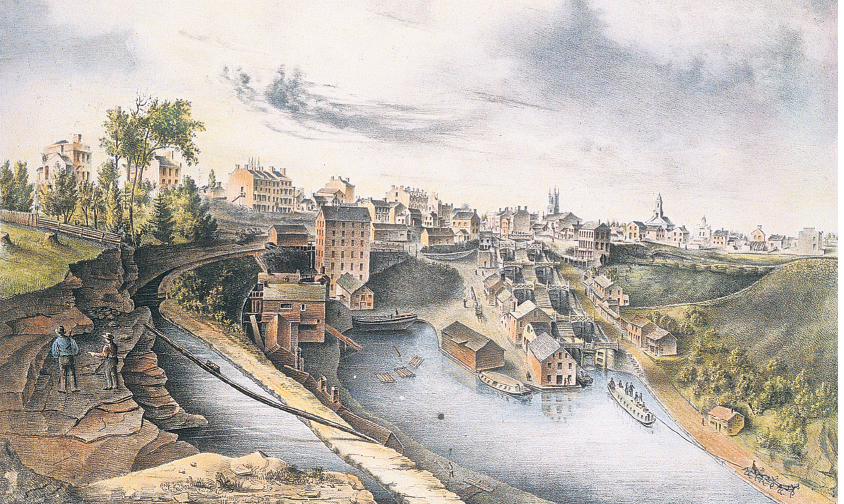Why did the United States experience a market revolution after 1815?
Printed Page 296

CHRONOLOGY
1807
- – Robert Fulton sets off steamboat craze.
1816
- – Second Bank of the United States is chartered.
1819
- – Economic panic.
1825
- – Erie Canal is completed in New York.
1829
- – Baltimore and Ohio railroad is begun.
1834
- – Female mill workers strike in Lowell, Massachusetts, and again in 1836.
THE RETURN OF PEACE IN 1815 unleashed powerful forces that revolutionized the organization of the economy. Spectacular changes in transportation facilitated the movement of commodities, information, and people, while textile mills and other factories created many new jobs, especially for young unmarried women. Innovations in banking, legal practices, and tariff policies promoted swift economic growth.
This was not yet an industrial revolution, as was beginning in Britain, but rather a market revolution fueled by traditional sources — water, wood, beasts of burden, and human muscle. What was new was the accelerated pace of economic activity and the scale of the distribution of goods. The new nature and scale of production and consumption changed Americans’ economic behavior, attitudes, and expectations.
CHAPTER LOCATOR
Why did the United States experience a market revolution after 1815?
Why did Andrew Jackson defeat John Quincy Adams so dramatically in the 1828 election?
What was Andrew Jackson’s impact on the presidency?
How did social and cultural life change in the 1830s?
Why was Martin Van Buren a one-term president?
Conclusion: The Age of Jackson or the era of reform?
 LearningCurve
LearningCurve
Check what you know.